#Alexander Stewart Duke of Albany
Explore tagged Tumblr posts
Note
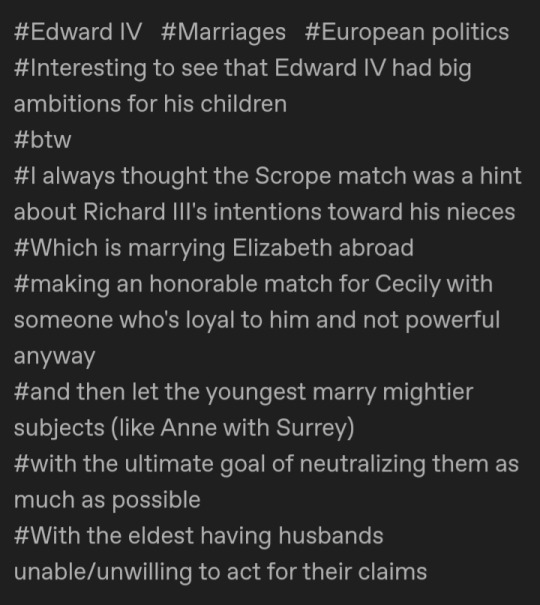
Hi! I'm trying to read up on the York princesses' early lives and I can find frustratingly few details on the same. I was specifically curious about their various childhood betrothals that ultimately never came into fruition due to the death of their father, but I can barely find anything online beyond the bare basics (essentially: the names of the people they were betrothed to). I was wondering of any specific details of all their individual betrothals survived, and if they changed across the years of their father's reign?
And in Bridget of York's case - since she's more elusive to find than her sisters - was she destined for a church path since birth? I've seen some sites claim that her grandmother Cecily Neville named her with no actual evidence beyond her piety, but I always assumed it was her parents who was more likely to have done so? Both Elizabeth Woodville and Edward IV were connected to St. Bridget and Elizabeth was also very pious.
You know a lot about this era so I hope it's okay to ask, sorry if the question seems out of the blue!
Hello! Sorry for taking so long to reply, I had to sit down and look up some things because the story of the betrothal of Edward IV's daughters is quite murky. I will talk about the betrothals that were done during Edward IV's reign because after that it's another thing entirely.
Let's talk about Bridget first. Was she destined for a church path since birth? There's no way of actually knowing this, but it's entirely possible she was. On a practical level, as the king's fifth surviving daughter, a competitive dowry to be used in a foreign marriage alliance would be hard to achieve (more about Edward IV and dowries in a second). More concrete evidence though does come from her name. I haven't found many noblewomen named Bridget in late medieval England but the one I did find, Bridget Holland (daughter of Thomas Holland 2nd Earl of Kent, Richard II's half-brother), indeed became a nun. Like Bridget of York, she seems to have been the youngest of 5-6 sisters.
Saint Bridget of Sweden was a very popular saint in England and she was especially revered by the English royal family (who since Henry V's time were patrons of a Bridgettine monastery at Sheen, Syon Abbey). Elizabeth of York and Margaret Beaufort would go on to commission the printing of a list of prayers popularly thought to have been written by St Bridget. For the Yorkists, however, St Bridget held particular importance because one of her prophecies had been used to justify Edward IV's right to rule. Cecily Neville in particular owned a copy of St Bridget's revelations which she later bequeathed to her granddaughter Anne de la Pole who not only also became a nun, but rose to the highest rank of prioress at Syon.
Cecily Neville was Bridget of York's godmother. Traditionally, godparents were the ones to name ('christen') the child at their baptism. Of course, most time the parents had their input too before the child was brought to the baptismal font. Elizabeth Woodville was also devoted to St Bridget. Interestingly, Cecily left her religious books to the two granddaughters who became nuns: Anne de la Pole, which I commented on above, and Bridget. Bridget received Cecily's Legenda Aurea (a collection of saints' lives), a book about St Katherine and another one about St Matilde.
To me, it seems entirely possible that Cecily Neville might have planned Bridget's career as a nun from the very beginning. It's quite likely that Edward IV and his wife Elizabeth vouched for the idea too, considering how important St Bridget's prophecy had been for Edward's legitimisation as king, they might have made a promise/vow to dedicate one of their children's lives to the Church as many catholic people still do today. I've seen the speculation that Bridget was sickly/had some kind of impairment from birth that would make her less desirable in the marriage market but I don't think we need that as a reason for her going into a convent.
Now going into the other princesses. We already know about Elizabeth of York, right? First, she was betrothed to Warwick's nephew and heir, George Neville, as a way to appease him in 1469. Then she was offered to Prince Edward of Lancaster but Margaret of Anjou went on to choose Anne Neville which was probably for the best, as Edward IV's suggestion, at a time when Edward V was about to be born, was probably just a ruse. Elizabeth's hand was also used as bait to bring back Henry Tudor to England in 1476. And again, it most certainly was a ruse as by that time she had just recently been betrothed to the Dauphin of France. She would be known as Madame la Dauphine until France called off the betrothal in late 1482.
Mary of York occupied 'the rather unfortunate position' as Ross describes it, of being her sister's replacement in the marriage alliance with France in case Elizabeth of York died before the wedding took place. It would not be until 1481, by then a time when many doubted the French marriage would even go through, that Mary was betrothed to King Frederick I of Denmark. She would die the next year in 1482.
Anne of York was first suggested to marry Philip, the future Duke of Burgundy, in 1480 as a part of a tentative Anglo-Burgundian alliance against France that Burgundy desperately wanted but that Edward IV only toyed with to pressure France into honouring their marriage alliance and wed Elizabeth of York and the Dauphin Charles. In the words of Charles Ross, Edward IV's biographer:
Edward quite ruthlessly exploited the duke’s desperate need of English support to get Anne’s marriage on the cheap. Maximilian had wanted a dowry of 200,000 crowns with Anne; Edward, on the other hand, regarded paying no dowry as part of the price of signing an alliance with Burgundy. When Maximilian argued that it was quite unreasonable for the bride of one of the wealthiest heirs in Europe to have no dowry at all, he still had small success in persuading her father to release the purse-strings. The original marriage treaty, signed on 5 August 1480, was modified by supplementary agreements on 14 and 21 August, which effectively released Edward from paying any dowry on condition of releasing to the duke the first year’s instalment of the pension of 50,000 crowns which he was demanding from Burgundy.
Here we must remember that Edward IV wanted to marry Elizabeth of York without paying any dowry at all. On the contrary, France was to pay for Elizabeth's upkeeping until she was married to the Dauphin. Edward IV, whilst dealing with Brittany to marry his son Edward to Anne of Brittany, heiress to her father's duchy, established that if the Duke of Brittany had a son before their children married, one of his daughters was to marry the duke's new son, and that Brittany—not him—were to provide his daughter's dowry. Ross cites a Breton scholar that snarkily remarked that ‘to marry his daughters without dowries was the objective which this miser [Edward IV] set before himself in the last years of his life’. Harsh.
However, Edward IV did agree to pay Cecily's dowry! Although admittedly it was much cheaper (20,000 crowns) than Edward IV himself was asking for Anne of Brittany's hand in marriage to his son (100,000 crowns as the heiress of Brittany, 200,000 in case her father had a son). Cecily of York was first betrothed to James III's heir, the future James IV, in 1473 as part of a truce between England and Scotland that allowed Edward IV to go to war against France in 1475. The truce with Scotland fell through by 1480 and by 1481 Edward IV was committed to a war against James. The next year Edward was willing to back James III's brother Alexander against him, with the condition that Alexander was to marry Cecily ‘if the said Alexander can make hymself clere fro all other Women, according to the Lawes of Christian Chyrche’.
Alexander backed down after the English invasion of Scotland, and James III once again suggested Cecily marry his son and heir as part of the peace terms but Edward IV called off the betrothal for good later that year and demanded the repayment of the dowry portion he had already paid to Scotland. It seems Edward had decided to renew the war against Scotland by that time (November 1482) and back Alexander as king again. Amazingly, Alexander would go on to make peace with his brother yet again in early 1483. So by the time Edward IV died, Cecily's betrothal to Scotland's heir was cancelled for good. Richard III would wed her to Ralph Scrope, Baron Scrope's second son and a man that was part of Richard III's northern affinity.
I haven't found anything about Katherine of York's betrothal during her father's reign. She was probably too young, being born in 1479. EDIT: There was a plan for Katherine to marry Isabella of Castille's heir Juan as proposed in 1482. See reblog in the notes.
And that's it! Basically, Louis XI's peace treaty with Burgundy in December 1482 frustrated at least two of Edward IV's marriage plans. The Dauphin of France would marry Margaret of Austria (Mary of Burgundy's daughter) instead of Elizabeth of York. On the other hand, Burgundy, no longer in need of Edward IV's help, was under no obligation to go through with the marriage of Anne of York and the young Philip of Burgundy. Edward IV's falling out with Scotland also meant Cecily's betrothal was called out.
By the time Edward IV died the only betrothal that was likely to go through was Prince Edward's with Anne of Brittany, so whenever I see people saying that if it wasn't for Edward's death Elizabeth of York would be queen of France, Cecily queen of Scotland, Anne duchess of Burgundy etc I can only assume the person saying that doesn't know much about the upheavals of the 1480s — or Edward IV's own disinclination to pay dowries for the marriages of his daughters.
I hope this answer was of some help, and once again, sorry for taking so long to reply.
#Edward IV#Bridget of York#Elizabeth of York#Mary of York#Anne of York#Cecily of York#Edward V#Anne of Brittany#Maximilian I Holy Roman Emperor#James III of Scotland#Alexander Stewart Duke of Albany#Katherine of York#Isabella I of Castile#Charles Ross#Quotes
65 notes
·
View notes
Text
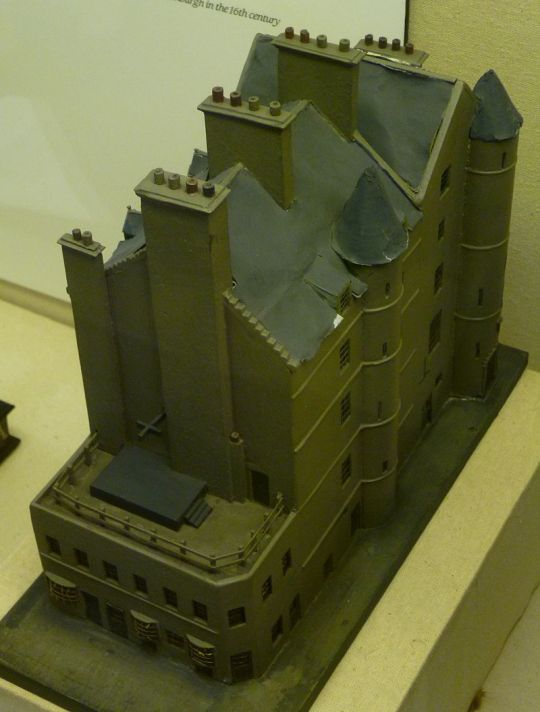
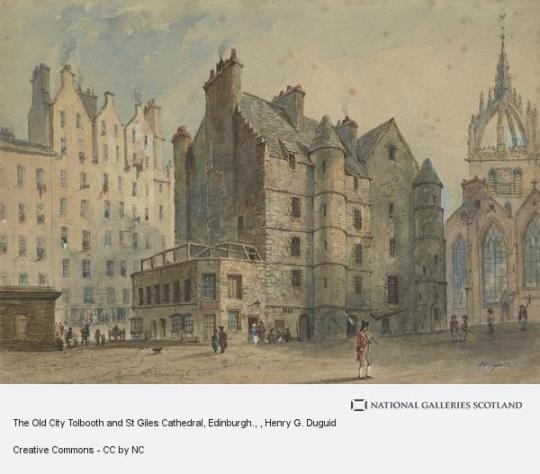
On October 16th 1516, Alexander Home, 3rd Lord Home and his brother William were executed in Edinburgh.
It's fair to say that those men who held the title Duke of Albany, have been involved in some of the most troublesome intrigue in our long history, the first one, a ruthless politician, was brother of King Robert III and was widely regarded as having caused the murder of his nephew, the Duke of Rothesay, this in turn forced the King to send the future James I to France in 1406, but was captured by pirates and "sold" to the English and held for 18 years, his ambitious uncle ruled as King in all but name until his death in 1420, when the next his son Murdoch, took over as Duke and regent, James I was eventually released in 1425 and Murdoch inevitably lost his head after being found guilty of treason.
Jump forward about 90 years and just after James IV died at Flodden, John Stewart, the latest Duke of Albany took over as Regent to James V was another of the boy Kings, I mentioned in my post earlier about James II.
Lord Home led his horsemen were part of the Scottish force that fought at Flodden, and was one of the few successful charges of that day, his men defeated the right wing of the English army, it's a pity other tactics went horribly wrong. As the battle progressed and the Scots were being slaughtered Lord Home fled the field, he did however stay on in Northumbria and attempted, unsuccessfully to to recapture the taken Scottish artillery some days later.
This story seems to be more about two men who disliked each other than anything else.
Although accepting Albany as Regent things started to go sour when the two had a meeting at Dumbarton Castle, where legend has it, Albany joked about Lord Home's small stature, quoting 'minuit praesentia famam' meaning 'the appearance doesn't live up to report.' Their relationship deteriorated and it seems Home tried to garner influence in England, possibly hoping to seek refuge there, sensing things were not going to end well with the new Regent.
In September 1515 Albany forcibly took Hume Castle, and ordered Home to meet him later that year at the Collegiate Church at Dunglass, where he was arrested and imprisoned at Edinburgh Castle. The keeper of the castle at the time was the Earl of Arran and Home's Brother in Law. Home persuaded Arran to escape with him and take up arms against Albany, they joined another rebel, the Earl of Angus in the Borders.
Moving North they attacked Glasgow capturing ammunition and throwing it down a well, they then headed east and to Dunbar, attacking the castle there and heading south again captured the Chief Herald, the Lord Lyon King of Arms at Coldstream holding him ransom for his mother who was a prisoner of one of Albany's lieutenants.
After offering a pardon, Albany invited Home and his brother William to Holyroodhouse, where he promptly arrested the pair, imprisoning then on the fortified island of Inchgarvie on The Firth of Forth.
Initially they were accused of the trumped charges of the murder of James IV at Flodden, then of failing to prevent English re-fortification at Norham Castle after the battle.
Finally he and William were charged with rebellion against Albany and beheaded, and their heads displayed on the gable of Edinburgh Tolbooth.
In the mid 1520's Albany was overthrown from the Scottish regency, and lived mainly in France until his death in 1536.
The pic is model of the Old Tolbooth exhibited in Edinburgh's Huntly House Museum. The execution platform can be seen projecting from the building. The second pic is a painting by Scottish artist Henry G. Duguid of the Tolbooth and St Giles.
16 notes
·
View notes
Text
Events 7.22 (before 1900)
838 – Battle of Anzen: The Byzantine emperor Theophilos suffers a heavy defeat by the Abbasids. 1099 – First Crusade: Godfrey of Bouillon is elected the first Defender of the Holy Sepulchre of The Kingdom of Jerusalem. 1209 – Massacre at Béziers: The first major military action of the Albigensian Crusade. 1298 – Wars of Scottish Independence: Battle of Falkirk: King Edward I of England and his longbowmen defeat William Wallace and his Scottish schiltrons outside the town of Falkirk. 1342 – St. Mary Magdalene's flood is the worst such event on record for central Europe. 1443 – Battle of St. Jakob an der Sihl in the Old Zürich War. 1456 – Ottoman wars in Europe: Siege of Belgrade: John Hunyadi, Regent of the Kingdom of Hungary, defeats Mehmet II of the Ottoman Empire. 1484 – Battle of Lochmaben Fair: A 500-man raiding party led by Alexander Stewart, Duke of Albany and James Douglas, 9th Earl of Douglas are defeated by Scots forces loyal to Albany's brother James III of Scotland; Douglas is captured. 1499 – Battle of Dornach: The Swiss decisively defeat the army of Maximilian I, Holy Roman Emperor. 1587 – Roanoke Colony: A second group of English settlers arrives on Roanoke Island off North Carolina to re-establish the deserted colony. 1594 – The Dutch city of Groningen defended by the Spanish and besieged by a Dutch and English army under Maurice of Orange, capitulates. 1598 – William Shakespeare's play, The Merchant of Venice, is entered on the Stationers' Register. By decree of Queen Elizabeth, the Stationers' Register licensed printed works, giving the Crown tight control over all published material. 1686 – Albany, New York is formally chartered as a municipality by Governor Thomas Dongan. 1706 – The Acts of Union 1707 are agreed upon by commissioners from the Kingdom of England and the Kingdom of Scotland, which, when passed by each country's Parliament, leads to the creation of the Kingdom of Great Britain. 1793 – Alexander Mackenzie reaches the Pacific Ocean becoming the first recorded human to complete a transcontinental crossing of North America. 1796 – Surveyors of the Connecticut Land Company name an area in Ohio "Cleveland" after Gen. Moses Cleaveland, the superintendent of the surveying party. 1797 – Battle of Santa Cruz de Tenerife: Battle between Spanish and British naval forces during the French Revolutionary Wars. During the Battle, Rear-Admiral Nelson is wounded in the arm and the arm had to be partially amputated. 1802 – Emperor Gia Long conquers Hanoi and unified Viet Nam, which had experienced centuries of feudal warfare. 1805 – Napoleonic Wars: War of the Third Coalition: Battle of Cape Finisterre: An inconclusive naval action is fought between a combined French and Spanish fleet under Admiral Pierre-Charles Villeneuve of France and a British fleet under Admiral Robert Calder. 1812 – Napoleonic Wars: Peninsular War: Battle of Salamanca: British forces led by Arthur Wellesley (later the Duke of Wellington) defeat French troops near Salamanca, Spain. 1833 – The Slavery Abolition Act passes in the British House of Commons, initiating the gradual abolition of slavery in most parts of the British Empire. 1864 – American Civil War: Battle of Atlanta: Outside Atlanta, Confederate General John Bell Hood leads an unsuccessful attack on Union troops under General William T. Sherman on Bald Hill. 1893 – Katharine Lee Bates writes "America the Beautiful" after admiring the view from the top of Pikes Peak near Colorado Springs, Colorado. 1894 – The first ever motor race is held in France between the cities of Paris and Rouen. The fastest finisher was the Comte Jules-Albert de Dion, but the "official" victory was awarded to Albert Lemaître driving his three-horsepower petrol engined Peugeot.
2 notes
·
View notes
Photo


The Stewart Bros, everyone
#i'm not over this#alexander stewart#duke of albany#mark rowley#gordon kennedy#the spanish princess#tsp#my edits
43 notes
·
View notes
Text
International Queens/Empress Consorts (1/?)
Margaret Tudor, Queen of Scotland (28 November 1489-18 October 1541)
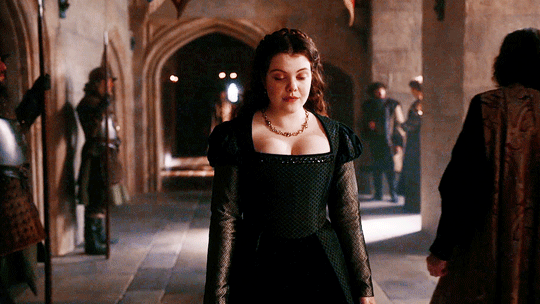
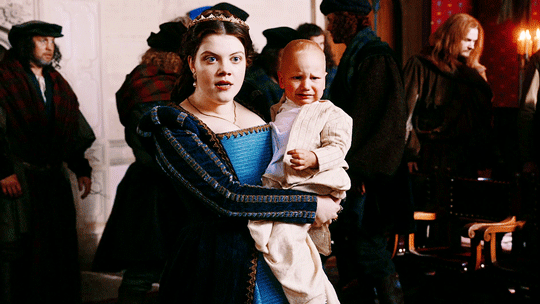
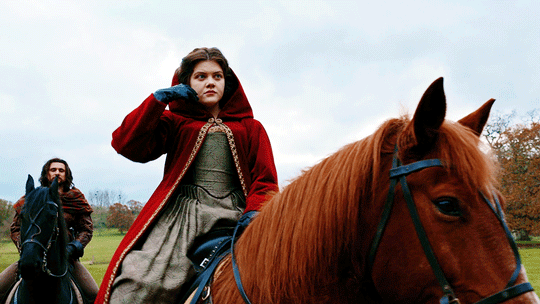
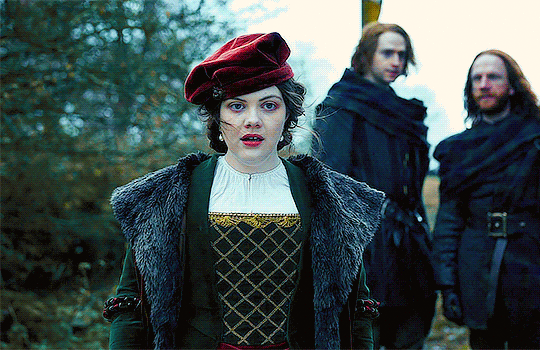
Daughter of King Herny VII and Elizabeth of York
Mother of James Stewart (Duke of Rothesay), Arthur Stewart (Duke of Rothesay), James V or Scotland, Alexander Stewart (Duke of Ross), Margaret Stewart (Countess of Lennox) and Dorothea Stewart
Wife of James IV of Scotland (m. 1503; died 1513), Archibald Douglas, 6th Earl of Angus (m. 1514; div 1527), and Henry Stewart, 1st Lord Methven (m. 1527)
Mother-in-law of Madeleine of France, Mary of Guise, and Matthew Stewart, 4th Earl of Lennox
Grandmother of James (Duke of Rothesay), Athur or Robert (Duke of Albany), Mary Stuart (Queen of Scots), James Stewart (Commander of Kelso and Melrose), James Stewart (1st Earl of Moray), Adam Stewart (Prior of Perth), James Stewart, John Stewart (Commander of Coldingham), Jean Stewart, Robert Stewart (1st Earl of Orkney; Commander of Holyrood), Henry Stewart (Lord Darnley), and Charles Stuart (1st Earl of Lennox)
6 notes
·
View notes
Photo

John Stewart, Earl of Buchan. By Merry-Joseph Blondel.
John Stewart was born c.1381, the son of Robert Stewart, 1st Duke of Albany and his second wife Muriella Keith. He succeeded to the Earldom of Buchan after the death of his uncle Alexander Stewart, Earl of Buchan (the Wolf of Badenoch), in 1405. In 1406 the Duke of Albany became Regent of Scotland, making him the most powerful man in Scotland, king in all but name.
#merry joseph blonel#merry-joseph blondel#kingdom of scotland#house of stewart#house of stuart#scottish dna#john ii stewart#regent of scotland#earl of buchan
10 notes
·
View notes
Photo
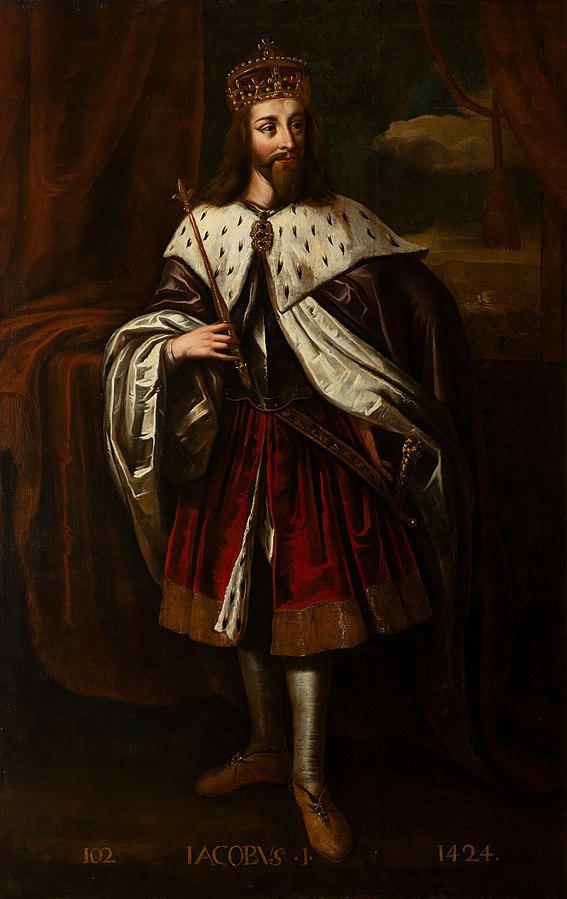
File:Jacob Jacobsz de Wet II - James I, King of Scotland (1394-1437) - 1684-6
James I (late July 1394 – 21 February 1437) was King of Scotland from 1406 to 1437. The youngest of three sons, he was born in Dunfermline Abbey to King Robert III and his wife Annabella Drummond. His older brother David, Duke of Rothesay, died under suspicious circumstances while being detained by their uncle, Robert, Duke of Albany. His other brother, Robert, died young. Fears for James's safety grew through the winter of 1405/6 and plans were made to send him to France. In February 1406, James was forced to take refuge in the castle of the Bass Rock in the Firth of Forth after his escort was attacked by supporters of Archibald, 4th Earl of Douglas. He remained there until mid-March when he boarded a vessel bound for France. On 22 March English pirates captured the ship and delivered the prince to Henry IV of England. The ailing Robert III died on 4 April and the 11-year-old James, now the uncrowned King of Scotland, would not regain his freedom for another eighteen years.
James was educated well at the English Court where he developed respect for English methods of governance and for Henry V. The Scottish king, apparently willingly, joined Henry in his military campaign in France during 1420 – 1421. His cousin, Murdoch Stewart, Albany's son, who had been an English prisoner since 1402, was traded for Henry Percy, 2nd Earl of Northumberland, in 1416. James had married Joan Beaufort, daughter of the Earl of Somerset, in February 1424 just before his release in April. The King's re-entry into Scottish affairs was not altogether popular since he had fought on behalf of Henry V in France and at times against Scottish forces. Noble families were now faced with paying increased taxes to cover the ransom repayments but would also have to provide family hostages as security. James, who excelled in sporting activities and appreciated literature and music, also held a strong desire to impose law and order on his subjects although he applied it selectively at times.
To secure his position, James launched pre-emptive attacks on some of his nobles beginning in 1425 with his close kinsmen, the Albany Stewarts, resulting in the execution of Duke Murdoch and his sons. In 1428 James detained Alexander, Lord of the Isles, while attending a parliament in Inverness. Archibald, 5th Earl of Douglas, was arrested in 1431, followed by George, Earl of March, in 1434. The plight of the ransom hostages held in England was ignored and the repayment money was diverted into the construction of Linlithgow Palace and other grandiose schemes. In August 1436, James failed in his siege of the English-held Roxburgh Castle and then faced an ineffective attempt by Sir Robert Graham to arrest him at a general council. James was assassinated at Perth on the night of 20/21 February 1437 in a failed coup by his uncle Walter Stewart, Earl of Atholl. Queen Joan, although wounded, managed to evade the attackers and reached her son, now King James II, in Edinburgh Castle.
Jacob Jacobsz de Wet II (1641, Haarlem – 1697, Amsterdam), also known as James de Witt, was a Dutch Golden Age painter known for a series of 110 portraits of Scottish monarchs, many of them mythical, produced for the Palace of Holyroodhouse, Edinburgh during the reign of Charles II.
31 notes
·
View notes
Text
MARGARET & JAMES IV
The Royal Wedding of a Princess of England and the King of Scots
(married 1503)
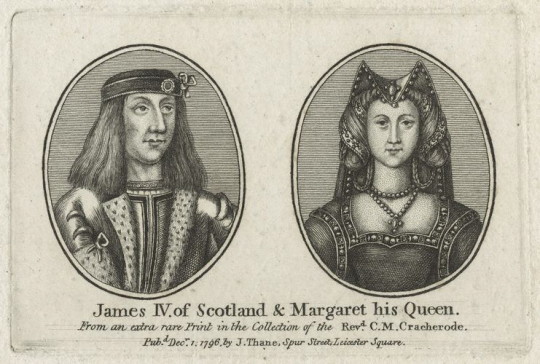
pictured below are portraits of the King and Queen of Scots, published by John Thane in 1796
-------------------- ~ -------------------- ~ --------------------
SERIES - On this day August Edition: Margaret and James were married on 8 August 1503.
-------------------- ~ -------------------- ~ --------------------
MARGARET was the eldest daughter of Henry VII, King of England and Princess Elizabeth (of York) of England. She was a member of the HOUSE OF TUDOR and was from her birth in 1489 a PRINCESS OF ENGLAND.
JAMES was the eldest son of James III, King of Scots and Princess Margrete of Denmark, and thus he was a member of the HOUSE OF STEWART. He had been JAMES IV, KING OF SCOTS since 1488.
In the 15th century he had previously been engaged to Cecily of York, another Princess of England and his future wife's aunt.
Then by January 1502 another opportunity for an Anglo-Scottish wedding arose, through the Treaty of Perpetual Peace signed between the two Kingdoms.
To seal the treaty it was agreed that a daughter of the King of England should marry the King of Scots. What happened one year later as they married by proxy on 25 January 1503, at Richmond Palace in England. She was 13 years old and he was 29 years old.
By June 1503 the Princess left for Scotland, finally arriving there by August, and a religious ceremony was held on 8 August 1503, at Holyrood Abbey in Edinburgh.
They had six children (check the list below), but only one survived into adulthood. While he had many other illegitimate children, some born before their wedding and some born after their wedding.

pictured above is a portrait of the King and Queen of Scots, from an unknown source
Though peace between England and Scotland only lasted until her father's death in 1509. As her brother, the new King Henry VIII, declared war on France in 1513, and Scotland as an old ally of France had to oblige, declared war and invaded England.
On 9 September 1513, the King of Scots leaded the Scottish army at the Battle of Flodden against the English and died on the battlefield, leaving his wife pregnant.
-------------------- ~ -------------------- ~ --------------------
At the time of his death their eldest surviving son James, Duke of Rothesay was only one year old. And she as the QUEEN DOWAGER OF SCOTS was made REGENT for their infant son, now known as King James V.
Although it was stipulated that she as the QUEEN MOTHER OF SCOTS could only be Regent if she did not remarry. What she secretly did less then a year later to Archibald Douglas, 6th Earl of Angus, with whom she had a daughter.
So, in 1515 she lost her position as Regent and the guard of their two surviving children at the time, only to be reinstated as Regent by 1524.
Her second marriage was turbulent and she divorced him in 1527, marrying for a third time in 1528, to Henry Stewart, a kinsman of her late husband.
The Queen Mother of Scots outlived her first husband for 13 years, dying in 1541.
-------------------- ~ -------------------- ~ --------------------
Their grandson James VI, King of Scots succeeded to the English throne through her English ancestry in the early 17th century. He succeeded as James I, King of England after the death of her niece Elizabeth I, Queen of England.
After the unification of England and Scotland in 1707 their descendants became the Monarchs of Great Britain. And to this day they are still the British Monarchs, as Kings and Queens of the United Kingdom.
-------------------- ~ -------------------- ~ --------------------
MARGARET and JAMES IV had six children...
James Stewart, Duke of Rothesay - died aged one;
an unnamed daughter - born and died on the same day;
Arthur Stewart, Duke of Albany - died aged eight months;
James V, King of Scots - husband first of Princess Madeleine of France and second of Princess Marie of Guise;
another unnamed daughter - born prematurely; and
Alexander Stewart, Duke of Ross - born posthumously and died aged nineteen months.
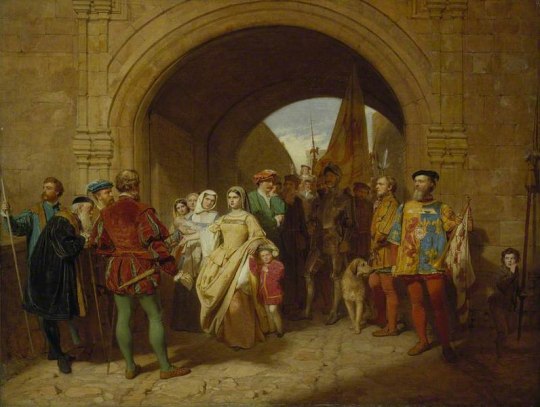
pictured above is a painting representing the Queen Mother of Scots defying the Scottish Parliament as Regent of her only surviving son the King of Scots, by John Faed from 1859
#margaret tudor#princess of england#english princess#james iv#king james iv#king of scotland#king of the scots#house of tudor#tudor#house of stuart#stuart#stewart#english royals#scottish royals#royals#royalty#monarchies#monarchy#royal wedding#royal history#british history#scottish history#european history#world history#history#tudor royals#16th century#henry viii#history with laura
26 notes
·
View notes
Text
There’s something in your eyes. || Alexander Stewart x OC
PART 1.
For the sake of Scotland, Eileen Douglas is to marry the young Alexander Stewart, a marriage none of them wanted.
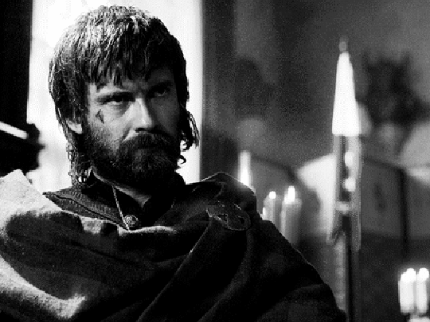
Eileen was standing perfectly right on the stairs of Bothwell Castle. Her mother snapped her hand when she tried to pull the skirt of her dress, trying to make herself more comfortable in her tight corset.
“Don’t fuss.” Her mother glared at her and Eileen had to do her best to not roll her eyes.
Instead she kept staring at the horizon where horsemen were approaching. She could count ten, all wearing the Stewart tartan. The closer they were, the more she could notice her brother William’s face twist with disgust. The small group passed the gates and her father walked down the stairs quickly to welcome them. A first man climbed down from his horse graciously. He had a huge smile on his face as he saluted her father, but it seemed to repulse William even more as he mumbled curses in Gaelic. The two men walked toward them and Eileen felt her mother’s hand in her back, prompting her to climb down the stairs. When she found herself face to face with Stewart she offered him her most beautiful smile, one her mother could be proud of after teaching her how to look pleased even when she wasn’t. But she hadn’t to fake it that much, the man in front of her actually seeming sympathetic.
She grabbed the skirt of her dress and lightly curtseyed. “Duke.”
“Lady Eileen. It is a pleasure to finally meet you.” He smiled.
“The pleasure is shared.” And she could easily imagine the thunder in her brother’s eyes as she spoke.
A Douglas having to meet a Stewart was never for pleasure. Both clans hated each other for generations and even more since the Douglas decided to betray King James IV. Eileen was just a bairn when her uncle planned his alliance with the English King, but somehow, she became the symbol of the peace between the two clans. As well for the man she would marry. It was King James’ decision that she would marry his cousin, the Duke of Albany’s younger brother, and as she detailed the young Duke’s expression, she thought maybe the Stewarts weren’t the turds William liked to call them.
“Let me introduce you to my brother, Alexander.” The Duke stepped aside and with a wave of his hand designated a young man still holding his horse’s reins.
The younger Stewart was tall, his tartan making his shoulders even larger. With a nonchalant pace he joined them. He stopped next to his brother and Eileen and they silently judged each other. His brown eyes were similar to two endless holes so gloomy were they. His hair was as dark and seemed unruleble while a thin and uncertain beard started to cover his jaws and cheeks.
"Lady Eileen." He muttered, saying her name seemed to be a great effort for him.
This time, her smile couldn't be faker. "Lord Stewart." She replied, pronouncing each syllable as she was spitting to his face.
Their interaction didn't last longer, her father inviting them to enter the castle to eat. The meal was rather calm, John Stewart being almost the only one speaking. He seemed pretty comfortable and even happy to be here, as if he wasn’t at the same table as former traitors. William liked to claim that what their uncle did was for the good of Scotland, that Stewarts were just a lineage of bastards, but Eileen knew they were the one who betrayed a King. And no matter how much William would insult the Stewarts, Douglass were the traitors.
If that fact didn’t prevent John from enjoying the lunch, she couldn’t tell the same of her betrothed. Alexander was silent, stabbing his food as a pouting child. She found it amusing, and could have even found it endearing if he wasn’t sending murderous glares at William. However, her brother wasn’t innocent , his piercing blue eyes giving back the threat gladly.
At some point, her father cleared his throat and stood up. All eyes were on him as he raised his cup. “To my daughter and her future husband.” He declared turning toward Eileen and then Alexander who had made the effort to look less unhappy, if it was even truly possible. “And may this alliance be a new beginning for our two clans.”
John stood up as well and clinked his glass with her father’s. “To a new beginning.”
…
“You are a surprisingly good company.” Eileen smiled as she walked in the garden beside Alexander. He looked down at her dubiously. “What? I like the silence.” She smirked.
He huffed and continued to walk. It was the second day the Stewarts were spending in Bothwell Castle and her mother had asked her to try to sympathize with the young man. But she found it hard to be nice with a man who wasn’t even talking to her.
"You know, we are going to be married for what is going to be a long time. Maybe we should try to at least know each other." She proposed, doing her best to not sound rude.
"I didn't want to marry." He grumbled, his foot kicking in a stone.
"See ? We have at least one common point." She smirked again.
Alexander suddenly stopped in front of her, leaning slightly over her, and she realized how taller he was compared to her. She pinched her lips, her eyes not leaving his despite how threatening they were.
"Don't you think because you're a bonny lass I'll forget you're a fucking Douglas whore."
He had barely finished his sentence, Eileen slapped his face hard. He didn't expect that, his hand rubbing his already red cheek. "I'm not a whore and do not ever call me like that or I'll cut off your balls." She warned him with a roar of her voice and she found herself satisfied at how he looked at her with wide eyes.
On these words, she exaggeratedly curtseyed before leaving him on his own. She felt her chest rise and fall ragingly, anger overwhelming her. As she walked in another part of the garden, she started to hate the whole world. She hated her uncle for starting this stupid rebellion. She hated King James for having decided to marry her to Alexander. She hated her father for having accepted it obediently. But most of all : she hated Alexander for being a prick turd.
Angry tears started to irritate her eyes and she wiped them away with her palms. She wanted to join her bedroom and cursed her all existence, but God seemed to have decided otherwise. Shouts from where she was coming from caught her attention and she started to walk back. If it was possible for her to be even more in fury, well now it was. William and Alexander were now fighting in the grass like two kids.
From the corner of her eyes, she perceived John running in their direction to separate them. The older Stewart grabbed his brother by the back of his tunic, forcing him to get up and free William.
"Can I have an explanation?" He asked his brother who was now dusting his tartan.
"He got slapped by a lass." William replied mockingly and it took all John's strength to prevent his brother from coming upon his opponent again.
"That's enough!" The Duke barked before dragging Alexander away.
Once they were gone, Eileen walked to her brother who was still sitting on the floor. He grinned at her, and she noticed he must have bitten his cheek or tongue in the fight because there was blood on his teeth.
"I don't know why you slapped him, Sister, but that's what all those bastard Stewarts deserve."
Eileen crouched in front of him, still silent before slapping him as well. William whined, his cheeks already hurting from the fight. He looked at her confusedly and she stood up. "You're as much an idiot than him."
…
Dinner was again very silent, but this time both Alexander and William kept their eyes away from each other. John as well was different, his smile more tended. Eileen wondered if her father had a word of what happened in the garden, she doubted William told him, he would have been furious and maybe he would have had another mark on his face. But she also doubted he didn't notice anything. William had his right eye swollen and his bottom lip cut while Alexander's cheek was almost violet of her slap and probably her brother's punch. Oh none of them looked proud of the incident.
After the dinner, a knock on the door interrupted the servant who had barely started untying the back of her dress. Eileen turned her head to Maggie and kindly asked her to see who it was. She tightened the loosened laces and finally walked to open the door slightly.
"Lord Stewart."
From where she stood in her bedroom, Eileen could distinguish Alexander's silhouette through the door's opening, he wasn't wearing his tartan.
"I'd like to talk to Lady Eileen." He declared. His voice was still strong but she could hear the uncertainty in it, and it made her smile.
Maggie turned around to have some sort of answer from her mistress. Eileen waved her hand and walked toward the door. "You can leave us, Maggie. Thank you."
The young servant nodded and left them after saying she would come back later. Once she had disappeared in a corridor, she crossed her arms and stared with contempt at the once more silent Alexander.
"What do you want?"
"To say that I'm sorry." He grumbled and she almost wanted to laugh at how pathetic he looked.
"Is it you who is sorry, or your brother who asked you to be ?" She asked with an annoyed raised eyebrow.
Alexander frowned. "Does it matter ?"
Eileen tilted her head, closing her eyes in exasperation. "Yes, it does."
He rolled his eyes and after rubbing the back of his neck, he finally spoke. "It's me. I'm sorry for calling you a whore."
"You are pardoned." She said, thinking that making peace with him could only be a benefit. "And you said I was bonny after all." She smirked and suddenly his face turned red of uncomfort.
And for once, he didn't look as unpleasant as usual. His eyebrows weren't furrowed and his features were rid of any tension, making him look younger. She came to the conclusion that he wasn't that bad looking with his still fascinating brown eyes. She stepped back to go back in her bedroom, but before she closed her door, she paused and with an amused smile she added :
"I am sure you have a pretty smile, Alexander."
43 notes
·
View notes
Note
Historically speaking, Alexander Stewart is James IV’s illegitimate son by his mistress Marion Boyd. Therefore, he is technically Meg’s stepson. On TSP, however, he is the Duke of Albany’s younger brother, making him James IV’s cousin.
Ah.
And with how they’re treating James IV’s kids in general... yeah. I doubt they writers did any actual research.
4 notes
·
View notes
Text



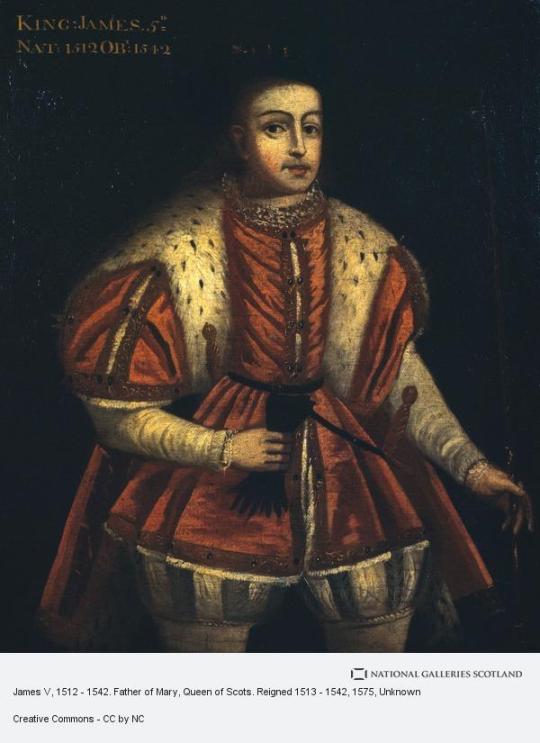
James V of Scotland was born on 10th April 1512.
James was son of King James IV and his queen Margaret Tudor, a daughter of Henry VII of England, and was the only legitimate child of James IV to survive infancy, it was through this line that Mary Queen of Scots based her claim to the throne of England, and indeed her son, who took the throne after Elizabeth died.
James was born at Linlithgow Palace and baptised on April 11th, receiving the titles Duke of Rothesay and Prince and Grand Steward of Scotland. He became king at just seventeen months old when his father was killed at the Battle of Flodden Field on 9th September 1513. James was “crowned” in the Chapel Royal at Stirling Castle on 21st September 1513.
During his childhood, like so many of the Stewart monarchs, the country was ruled by regents, first by his mother, until she remarried the following year, and then by John Stewart, 2nd Duke of Albany, who was next in line to the throne after James and his younger brother, the posthumously-born Alexander Stewart, Duke of Ross.
Other regents included Robert Maxwell, 5th Lord Maxwell, a member of the Council of Regency who was also bestowed as Regent of Arran. Queen Margaret´s tempestuous private life complicated her son´s childhood, and after she divorced her second husband, Archibald Douglas 6th Earl of Angus, the Earl kidnapped young James. For over two years he held him as a virtual prisoner, showering him with gifts and introducing him to a round of unsuitable pleasures. James loathed him and finally managed to escape in 1528 and assumed the reins of government himself.
James´ personal rule began by savagely pursuing his opponents and he hounded the Earl of Angus out of Scotland. James combined suspicion of nobles with a popular touch, travelling anonymously among Scottish people as the ´Gudeman o´Ballengeich´. John Knox described him thus: ´he was called of some, a good poor man´s king; of others he was termed a murderer of the nobility, and one that had decreed their whole destruction´.
A highly strung, intelligent man who alternated between black depression and bouts of feverish energy, James had already fathered at least nine illegitimate children by a series of mistresses by the time a marriage was arranged for him.
He married Madeleine, daughter of Francois I of France, and the young couple returned to Scotland in May 1537. The Princess was a fragile woman, and the Scottish climate did not agree with her she died in her husband’s arms on 7th July 1537, seven weeks after her arrival in Edinburgh.
In governing, James increased his income by tightening control over royal estates and from the profits of justice, customs and feudal rights. He also gave his illegitimate sons lucrative benefices, diverting substantial church wealth into his coffers. James spent a large amount of his wealth on building work at Stirling Castle, Falkland Palace, Linlithgow Palace and Holyrood and built up a collection of tapestries from those inherited from his father.
In 1538 he married another French lady, the widowed Mary of Guise, tall, well-built and already the mother of two sons. She had two more sons by James but they both died in infancy within hours of each other in 1541. The death of the Kings’ mother in 1541 removed any incentive for peace with England, and war broke out.
Initially the Scots won a victory at the Battle of Haddon Rig in August 1542. The Imperial ambassador in London, Eustace Chapuys, wrote on 2nd October that the Scottish ambassadors ruled out a conciliatory meeting between James and Henry VIII in England until the pregnant Mary of Guise delivered her child. Henry would not accept this condition and mobilised his army north.
James was with his army at Lauder on 31 October 1542. Although he hoped to invade England, his nobles were reluctant. He returned to Edinburgh on the way writing a letter in French to his wife from Falahill mentioning he had three days of illness.
Next month his army suffered a serious defeat at the Battle of Solway Moss, a loss caused by infighting within the nobles on who was in command.
He took ill shortly after this, on 6th December; by some accounts this was a nervous collapse caused by the defeat, although some historians consider that it may just have been an ordinary fever. Whatever the cause of his illness, he was on his deathbed at Falkland Palace when his only surviving legitimate child, a girl, was born.
Sir George Douglas of Pittendreich brought the news of the king´s death to Berwick. He said James died at midnight on Thursday 15 December; the king was talking but delirious and spoke no "wise words." Having said that, history reports he uttered the following; 'It cam' wi' a lass, and it will gang wi' a lass,' meaning that whilst the Stewarts came to power through marrying a princess, the Stewart line would end with his daughter as queen. Of course this wasn’t true so I wonder to myself at times why such importance seems to have been placed on his words through the centuries.
He was buried at Holyrood Abbey alongside his first wife Madeleine and his two sons. The tomb was probably destroyed during the Rough Wooing in 1544, they were again “violated” at the end of James VII reign when the people of Edinburgh rioted. Queen Victoria arranged for the vault to be repaired.
There was another story regarding the grave of James V that happened in 1683, read about that on the great web pages of Dr Mark Jardine here https://drmarkjardine.wordpress.com/.../the-tomb-of.../
25 notes
·
View notes
Text
Events 8.17 (before 1840)
310 – Pope Eusebius dies, possibly from a hunger strike, shortly after being banished by the Emperor Maxentius to Sicily. 682 – Pope Leo II begins his pontificate. 986 – Byzantine–Bulgarian wars: Battle of the Gates of Trajan: The Bulgarians under the Comitopuli Samuel and Aron defeat the Byzantine forces at the Gate of Trajan, with Byzantine Emperor Basil II barely escaping. 1186 – Georgenberg Pact: Ottokar IV, Duke of Styria and Leopold V, Duke of Austria sign a heritage agreement in which Ottokar gives his duchy to Leopold and to his son Frederick under the stipulation that Austria and Styria would henceforth remain undivided. 1386 – Karl Topia, the ruler of Princedom of Albania forges an alliance with the Republic of Venice, committing to participate in all wars of the Republic and receiving coastal protection against the Ottomans in return. 1424 – Hundred Years' War: Battle of Verneuil: An English force under John, Duke of Bedford defeats a larger French army under Jean II, Duke of Alençon, John Stewart, and Earl Archibald of Douglas. 1488 – Konrad Bitz, the Bishop of Turku, marks the date of his preface to Missale Aboense, the oldest known book of Finland. 1498 – Cesare Borgia, son of Pope Alexander VI, becomes the first person in history to resign the cardinalate; later that same day, King Louis XII of France names him Duke of Valentinois. 1549 – Battle of Sampford Courtenay: The Prayer Book Rebellion is quashed in England. 1560 – The Catholic Church is overthrown and Protestantism is established as the national religion in Scotland. 1585 – Eighty Years' War: Siege of Antwerp: Antwerp is captured by Spanish forces under Alexander Farnese, Duke of Parma, who orders Protestants to leave the city and as a result over half of the 100,000 inhabitants flee to the northern provinces. 1585 – A first group of colonists sent by Sir Walter Raleigh under the charge of Ralph Lane lands in the New World to create Roanoke Colony on Roanoke Island, off the coast of present-day North Carolina. 1597 – Islands Voyage: Robert Devereux, 2nd Earl of Essex, and Sir Walter Raleigh set sail on an expedition to the Azores. 1668 – The magnitude 8.0 North Anatolia earthquake causes 8,000 deaths in northern Anatolia, Ottoman Empire. 1717 – Austro-Turkish War of 1716–18: The month-long Siege of Belgrade ends with Prince Eugene of Savoy's Austrian troops capturing the city from the Ottoman Empire. 1723 – Ioan Giurgiu Patachi becomes Bishop of Făgăraș and is festively installed in his position at the St. Nicolas Cathedral in Făgăraș, after being formally confirmed earlier by Pope Clement XI. 1740 – Pope Benedict XIV, previously known as Prospero Lambertini, succeeds Clement XII as the 247th Pope. 1784 – Classical composer Luigi Boccherini receives a pay rise of 12,000 reals from his employer, the Infante Luis, Count of Chinchón. 1798 – The Vietnamese Catholics report a Marian apparition in Quảng Trị, an event which is called Our Lady of La Vang. 1807 – Robert Fulton's North River Steamboat leaves New York City for Albany, New York, on the Hudson River, inaugurating the first commercial steamboat service in the world. 1808 – The Finnish War: The Battle of Alavus is fought. 1827 – Dutch King William I and Pope Leo XII sign concord. 1836 – British parliament accepts registration of births, marriages and deaths.
1 note
·
View note
Photo

they all need something to hold onto
“They would like to see you married to a prominent Stewart with Scotland and Clan Stewart’s best interests at heart.”
“Married?” she repeats in shock.
“Ideally, the marriage would be between you and the Duke of Albany, but as the duke is married, we have decided it would be best if you married his brother and representative in all things.”
It takes a long moment for Meg to understand his meaning.
The Duke of Albany’s brother.
Alexander Stewart.
The pig.
#megander#meg tudor x alexander stewart#meg tudor#alexander stewart#the spanish princess#tsp#fic by me#they all need
13 notes
·
View notes
Text
THE BATTLE OF LOCHMABEN FAIR - CLAN CARRUTHERS CCIS
THE BATTLE OF LOCHMABEN FAIR – CLAN CARRUTHERS CCIS
BATTLE OF LOCHMABEN The Battle of Lochmaben Fair took place on the 22nd July 1484, in the small burgh of Lochmaben, in Dumfriesshire, southwest Scotland. The ‘Rebels’ were led by James, the 9th Earl of Douglas and Alexander Stewart, Duke of Albany. Their force was made up of renegade Scots, many paid to fight by the Earl of Douglas, and English cavalry under Albany who crossed over the border…

View On WordPress
0 notes
Text

This is an oil painting of Scottish Protestant martyr, John Hamilton.
He was the second son of Sir Patrick Hamilton of Kincavil and Catherine Stewart, daughter of Alexander, Duke of Albany, second son of James II of Scotland.
He travelled to Europe, where he met several of the leading reformed thinkers, before returning to Scotland to preach. He was tried as a heretic by Archbishop James Beaton, found guilty and handed over to secular authorities to be burnt at the stake in St Andrews.
#house of hamilton#scottish monarchy#scottish dna#kingdom of scotland#house of stewart#house of stuart
2 notes
·
View notes
Text
Scottish Titles
Below you can find a list of all the titles available for the Kingdom of England. Those that are currently in use or reserved have been marked as such. All titles are inherited through male-preference primogeniture.
Dukes
Duke of Albany (Reserved for Royal Use) Duke of Kintyre Duke of Lennox Duke of Lorne Duke of Montrose Duke of Orkney Duke of Ross Duke of Rothesay (Held by Alexander Stuart [OPEN])
Earldoms
Earl of Ardmenach Earl of Argyll Earl of Arran Earl of Atholl Earl of Avondale Earl of Bothwell Earl of Buchan Earl of Caithness Earl of Cassilis Earl of Crawford Earl of Eglinton Earl of Erroll Earl of Glencairn Earl of Gowrie Earl of Huntly Earl of Mar Earl of Marischal (Held by Richard Thorburn [OPEN]) -----Lord Altrie Earl of Menteith Earl of Moray (Held by James Stewart [OPEN]) -----Lord Abernathy Earl of Morton Earl of Rothes Earl of Strathearn Earl of Sutherland (Held by Malcom Sutherland [OPEN]) (Additional 10 OCs)
Lords of Parliament
Lord Ardmannoch Lord Balliol Lord Borthwick Lord Cathcart Lord Dingwall Lord Doune Lord Dunbar Lord Elphinstone Lord Forbes Lord Gray Lord Herries (Held by Duncan Murdoch [OPEN])Lord LovatLord OchiltreeLord PaisleyLord SaltounLord SempillLord SinclairLord Torphichen(Unlimited OC Creation)
0 notes